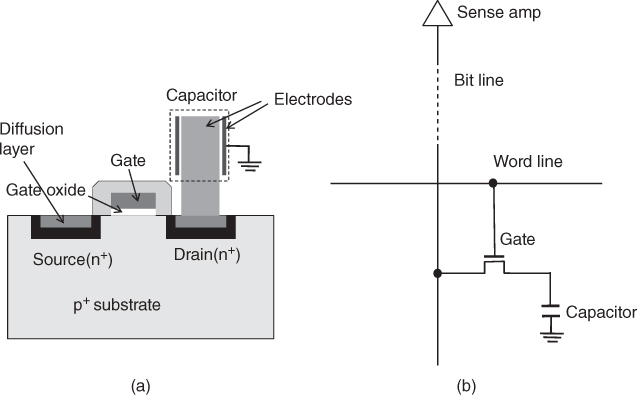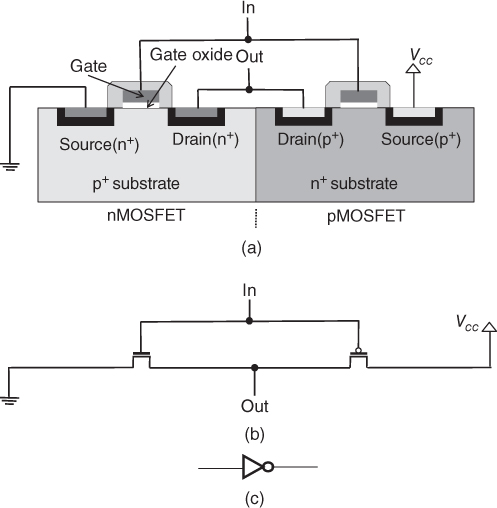Chapter 4Fundamentals of Electronic Devices and Systems
4.1 Fundamentals of Electronic Components
In this section, the fundamentals of electronic devices necessary to understand Chapters 6–8 are introduced. Those who are familiar with this subject can skip this section.
4.1.1 DRAM (Dynamic Random Access Memory)
A dynamic random access memory (DRAM) is made on an nMOSFET (n-channel Metal Oxide Semiconductor Field Effect Transistor) structure that consists of n+ diffusion layers (the source and drain) and p+ substrate as illustrated in Figure 4.1 [1]. The drain is connected to a capacitor to retain a certain amount of charge. A cylindrical stack-type capacitor is illustrated in Figure 4.1a. Since the critical charge Qcrit of a DRAM is roughly equal to CVcc/2, DRAMs are not sensitive to SEE (Single Event Effect) with high capacitance C as previously shown in Figure 1.15. Read and write functions can be simply made by opening the gate through a WL (Word Line) as illustrated in Figure 4.2b.

Figure 4.1 (a) Structure of DRAM and (b) its equivalent circuit

Figure 4.2 (a) Structure of an inverter, (b) circuit and (c) its symbol
4.1.2 CMOS Inverter
A CMOS (Complementary Metal Oxide Semiconductor) inverter inverts the input signal from 0 to 1 or vice versa and is the most basic ...
Get Terrestrial Radiation Effects in ULSI Devices and Electronic Systems now with the O’Reilly learning platform.
O’Reilly members experience books, live events, courses curated by job role, and more from O’Reilly and nearly 200 top publishers.

